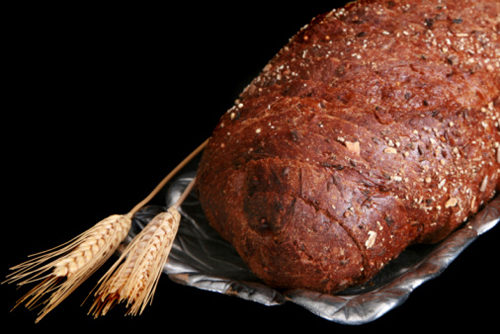The waiting room in many gastroenterology practices has gotten mighty crowded lately. A combination of stress, poor eating choices, lack of exercise and genetics is causing many people’s digestive systems to rebel against them.
Rob Hurlbut, CEO of Attune Foods of San Francisco, CA, says nearly one in two Americans regularly suffer from digestive distress, per the American Gastroenterological Association. But, there’s hope, he says: “The causes are numerous, but some of the simplest dietary changes can address a huge percentage of the issues.”
Many consumers agree that adjusting one’s diet is the natural place to start for dealing with digestive issues. Such shoppers aren’t just cutting out problematic ingredients; they’re adding in certain foods that are known to support digestive health. This decision has lead to increased interest in functional foods and drinks.
Take, for instance, those that contain probiotics. According to SPINS data (52 week period ending 4/17/10), sales of such probiotic-boosted foods reached $206,407,454 in the natural 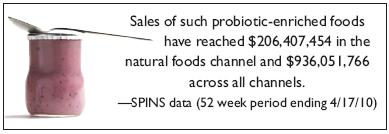 foods channel, which is about 13.3% higher than it was a year ago at this time. When you consider all channels, foods enriched with probiotics reached a staggering $936,051,766 (20% higher than it was the year before) (1)!
foods channel, which is about 13.3% higher than it was a year ago at this time. When you consider all channels, foods enriched with probiotics reached a staggering $936,051,766 (20% higher than it was the year before) (1)!
This growth is striking, given that many families are on a tight grocery budget. Wendy Goldner, director of marketing at NextFoods, Boulder, CO (maker of GoodBelly probiotic juice drinks) says, “Consumers are beginning to realize that better, healthier, more nutrient-based diets are providing a more cost-effective solution to maintaining their long-term health than some traditional pharma-based models.”
All in all, says Rodger Jonas, director of national sales for P.L. Thomas, Morristown, NJ, “It is an exciting time to be in the functional ingredient business and an area that requires continuous development.”
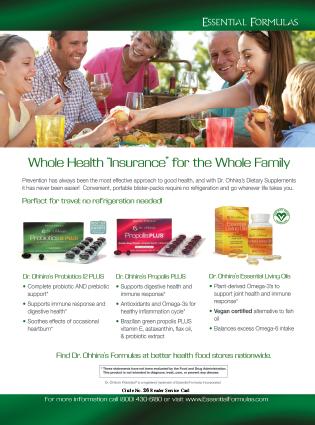
Fiber: Step One for Digestive Health
One reason why functional foods for digestion is hot has to do with one mainstay ingredient of the category: fiber. It’s not too difficult to find a shopper who equates a high-fiber diet with good digestion. What’s trickier is finding someone who can tell you about the different types of fiber and exactly why they are helpful for digestive health.
Dietary fiber is the part of plants that we cannot digest, and it falls into two areas: insoluble and soluble. Insoluble fiber cannot dissolve in water, and benefits the digestive system by adding bulk, which helps move waste through the intestines and out of the body. Fiber-rich foods help increase stool mass and soften it, making it easier to excrete in those experiencing constipation. This may also be the reason why fiber is said to help reduce the risk of developing hemorrhoids, which often develop because of straining during bowel movements (2).
Conversely, those with watery stool find that fiber helps absorb excess water, which helps relieve diarrhea. The Mayo Clinic goes so far as to say “fiber may provide relief from irritable bowel syndrome,” an intestinal disorder marked by frequent and/or irregular bower movements (2). Some research also indicates that fiber may benefit colon health and those with certain chronic conditions.
The other kind of fiber—soluble—dissolves in water and forms a gelatinous substance. Soluble fiber (such as that found in oats and beans) is associated with a healthy heart and blood sugar. It also has some digestive health benefits. Says Emilio Gutierrez, R.Ph., vice president of technical services, BI Nutraceuticals, Islandia, NY, “Soluble fiber, sometimes referred to as a prebiotic, dissolves then it absorbs water in the intestine and becomes viscous. It then gets fermented by bacteria in the colon yielding intestinal gas. The benefits to us include enhanced digestion and intestinal fermentation, balancing of the intestinal pH, promotion of the digestive flora and regularity as well as decreased LDL cholesterol levels.”
The distinction between soluble and insoluble fiber may not be clear to shoppers, nor is how much to take (see sidebar “Fiber: Are You Getting Enough?”). According to Jonas, one thing not to do is to load up on too much soluble fiber, which isn’t healthy, he says. “The new school of thought is that we need to have a proper mix of soluble and insoluble fiber,” he says adding, “We are now focusing on a balanced amount of fiber along with filling specific gaps in nutrition.”
For this reason, new ingredients that mix fibers are used to fortify foods for digestive and other health reasons. For instance, Chia Max from P.L. Thomas is embedded with 3% stable omega ALA and also contains 47% fiber (a mixture of soluble and insoluble fiber) and 29% protein (with an ALA rating of 115). “This is the wave of the future—ingredients with multiple functions along with multiple ingredients to attack the same health area—cognitive function, heart health, bone health and others,” he says.

Unfortunately, the amount of fiber to take isn’t the only communication breakdown with shoppers. New research from Mintel indicates that about 25% of respondents to a new survey think that fiber-enriched foods are only necessary for those who have digestive problems; men are more likely than women to feel this way (3). Furthermore, 37% wrongly believe feel that eating “regular” foods is sufficient for their fiber intake, and supplements and fiber-enriched foods are unnecessary (3).
To top it off, just over one-quarter of shoppers (27%) don’t care for the taste of fiber-enriched foods. This might be deterring them from buying fiber-rich foods at all, as Mintel notes that just 30% try to eat high-fiber foods (3).
Retailers, here’s where you can help with some damage control. Let shoppers know that most of them aren’t getting enough fiber. Offer taste testings of high-fiber foods, and don’t be afraid to reach out to customers that aren’t in your core group of shoppers. Plus, combating negative perceptions about the taste of fiber-rich foods may warrant a money-back guarantee with certain parameters.
During such tasting sessions, retailers may have to tackle the inevitable question of whether high-fiber foods cause unpleasant side effects for the digestive tract. Addressing this issue head on is Bryan Rodriguez, technical marketing and scientific affairs manager at Lonza, Allendale, NJ. Certain kinds of fiber won’t lead to digestive trouble at all, he says, using his company’s FiberAid ingredient as an example. Even at fairly high doses (15 g/day), this product “p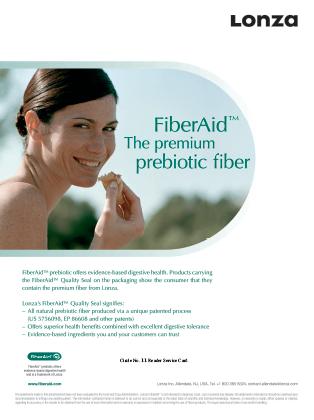 rovides gastrointestinal benefits without the typical side effects, such as gas and bloating, that are commonly associated with other dietary fiber ingredients,” he notes, referencing some current research (4). The reason why, Rodriguez explains, is that its highly branched structure is fermented slowly.
rovides gastrointestinal benefits without the typical side effects, such as gas and bloating, that are commonly associated with other dietary fiber ingredients,” he notes, referencing some current research (4). The reason why, Rodriguez explains, is that its highly branched structure is fermented slowly.
It should be noted that some fibers used for digestive applications also fall into another important segment of the functional foods and beverages category: prebiotics and probiotics.
Being Proactive about Probiotics
Thanks in part to the efforts of a multimillion-player in the mainstream yogurt category, probiotics are practically synonymous with good digestion in the minds of many Americans. But, this area is opening up to other foods as well.
New applications. Part of the reason why probiotics are now more attractive to food manufacturers is that industry suppliers have gotten quite inventive with the types of probiotics that they offer.
For instance, Jonas points to GanedenBC30 (Bacillus coagulans GBI30, 6086) probiotics from Ganeden Biotech, Mayfield Heights, OH, which have helped, in his words, “move probiotics into mainstream products” like muffins and pizza. “This is a big departure from the basic Lactobacillus organism that must be added post-processing and still has major logarithmic losses during distribution and in the gut. The advent of improved ingredients and more process-friendly ingredients has resulted in a wider array of food products with nutrition components.”
Let’s breakdown Jonas’ thought a bit further. According to Mike Bush, vice president of business development at Ganeden Biotech, whether or not a probiotic strain is effective in the body is strongly dependent upon whether it can survive the manufacturing process and stomach acid so it can colonize in the intestines.
Getting probiotics to the intestines is where the innovation lies. “Traditional probiotics have been delivered in cultured dairy products because they survive best in the confines of refrigerated dairy products,” says Bush. “With the introduction of next-generation probiotics that do not require refrigeration, the options for food delivery vehicles are greatly expanding.”
Another unique probiotic solution comes from Lallemand-Institute Rosell. According to Dion, microencapsulating strains has helped broaden the horizon for probiotics. Speaking of her company’s Probiocap microencapsulation technology, she says “It has helped us develop new applications for probiotics, and offer more versatility to users.” The main reasons why is that it gives probiotics “excellent survival under the harsh conditions linked to industrial and digestive processes—high acidity, high temperature (close to 100% survival at 50° C), and compression.” Choosing the proper packaging and processing technique also helps protect the probiotic strains from degradation.

Goldner brings up another reason for using probiotics in non-dairy applications: “Over 60% of the population react negatively to some dairy products and it seems counterintuitive to provide digestive support in dairy form.” In its probiotic juices, “Our main probiotic, Lp299v, is what you might call a super probiotic. It thrives in both the acidic juice environment as well as the acidic environment of your gut. That means that mass numbers of lactose intolerant people can now enjoy the digestive and immune benefits of a probiotic without suffering the consequences (e.g., gas, bloating, diarrhea) they get when consuming dairy.” This probiotic is manufactured by Probi.
Another unique idea for housing probiotics is in refrigerated chocolate, says Hurlbut of Attune, who says it is a “great storage medium, ensuring you get the full clinical dose at time of consumption.” His company offers Attune Bars with Lactobacillus acidophilus NCFM and Bifidobacterium lactis HN019 for improved digestive and immune health. Varieties include chocolate bars (seven flavors), granola bars (three flavors) and granola (three flavors).

At the same time, one can’t completely rule out dairy. Spoonable and drinkable yogurt companies are bringing to market unique flavors and some are giving probiotic cheeses a second look. Kraft launched a probiotic cheese into the mainstream market, but the reaction from shoppers was what the firm’s CEO called a disappointment. Nonetheless, studies continue to indicate that it’s a good delivery method for these good bugs. In a very recent study, several elderly individuals all living in the same housing facility ate a slice of probiotic Gouda cheese (or a placebo) everyday for once month. The probiotics in the cheese were Lactobacillus rhamnosus HN001 and Lactobacillus acidophilus NCFM. According to blood tests, those who consumed the probiotic cheese had a boosted immune system (5).
Health benefits. A more-thorough discussion of the health benefits of probiotics will be presented in the third part of this digestive health series (September 2010). But, here are a few quick reasons why industry insiders interviewed for this article believe consumers need probiotics for healthy digestion:
• According to Goldner, more than 70% of the immune system is found in the digestive tract. Thus, a healthy digestive system is essential to overall health. “Maintaining a healthy balance of intestinal microflora is one of the best ways to build and enhance digestive health and, thus, the immune system,” Goldner feels.
• As we age, microflora deteriorates, so it’s important to replenish supplies.
• Antibiotics kill good bacteria along with the bad, so those taking these drugs should also take probiotics.
• Probiotics help relieve symptoms of bowel diseases, says Bush.
• Dion notes that healthy bacteria improve digestion by helping to break down lactose, proteins and fibers, plus they inhibit pathogens and prevent infections.
Upswing in Prebiotics Sales
Remember the data from SPINS about increased sales of probiotic foods? Well, prebiotics are also seeing an upswing in sales. In the natural foods channel, sales of foods with prebiotic content jumped about 24% over the past year (from $3,050,225 to $3,786,177, 52-week period ending April 17, 2010) (1). Across all channels, prebiotic-enriched foods climbed 5.7% (from $74,130,037 to $78,364,782) (1).
This increase in sales is noteworthy, particularly given there’s a lot of confusion about what this term means. “I don’t think that consumers really understand the concept of prebiotics yet, but there is certainly an opportunity to ride on the ‘coat tails’ of the probiotics,” says Gutierrez.
Bush takes a stab at a quick and dirty definition: “Prebiotics are non-digestible food ingredients that stimulate the growth and/or activity of bacteria in the digestive system which are beneficial to the health of the body.”
Well-established prebiotics include inulin, fructo-oligosaccharide (FOS) and psyllium, which studies say can increase good bacteria like bifidobacteria or even the absorption of minerals like calcium (6). Regarding psyllium (a soluble fiber that also can function as a prebiotic), recent research found that those who consume the prebiotic experience increased satiety because it caused the secretion of a peptide that helps regulates appetite (7). Gutierrez sees psyllium as a potential area of growth for the digestive health industry. “Psyllium is an excellent fiber and it allows you to make the heart/cholesterol claims. This is an excellent fit for many food products.” His firm offers several psyllium raw materials and probiotic-containing premixes of herbs and vitamins.
Another prebiotic fiber, larch arabinogalactan (such as FiberAid from Lonza) has numerous health benefits, according to Rodriguez. He notes that the fiber helps increase anaerobes like Bifidobacteria and Lactobacilli and is said to increase short-chain fatty acids (SCFAs) and decrease ammonia levels in the gut. This is significant, he says, because SCFAs lower the pH in the colon. “Acetate, propionate and butyrate are the major SCFAs produced by friendly gut microflora. They can stimulate salt and water absorption in the gut and are important metabolites of intermediary metabolism in the colonic epithelium. Acetate and propionate are reported to be taken up from the gut to provide energy for the brain, muscle and heart, while butyrate provides about 50% of the daily requirements of the gastrointestinal mucosa (8),” says Rodriguez.
story continues below
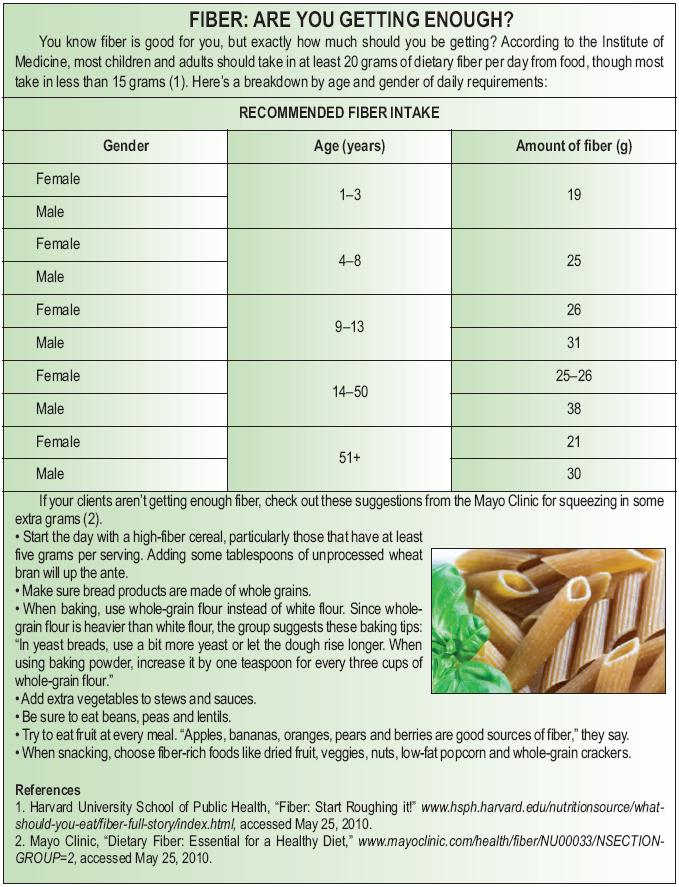
The Future of Functional
As the functional food and beverage category continues to grow, so too may their associated health claims. It should be noted that this is an area of increased scrutiny from a regulatory standpoint. For instance, the U.S. Food and Drug Administration recently suggested new labeling guidelines for liquid supplements and beverages, in part because of claims on functional beverages. Says Jonas, “FDA will scrutinize closely specific nutritional statements and will work at closing the gap on supplements ‘looking like’ food products and beverages. If it looks like a beverage, it needs to be a beverage.”
So, retailers must also do their due diligence. If a functional beverage is making health claims, be sure they have the clinical proof to back up their statements. WF
References
1. Data supplied by SPINS from SPINSscan data.
2. Mayo Clinic, “Dietary Fiber: Essential for a Healthy Diet,” www.mayoclinic.com/health/
fiber/nu00033, accessed May 25, 2010.
3. Mintel, “The Importance of Fiber, a Hard Pill for Consumers to Swallow,” press release distributed May 20, 2010.
4. R.R. Robinson, et al., “Effects of Dietary Arabinogalactan on Gastrointestinal and Blood Parameters in Healthy Human Subjects,” J. Am. Coll. Nutr. 20 (4), 279–285 (2001); J.L. Causey-O’Brien, doctoral thesis, University of Minnesota (2002); C.E. Rycroft, et al., “A Comparative in vitro Evaluation of the Fermentation Properties of Prebiotic Oligosaccharides,” J. Appl. Microbiol. 91 (5), 878–887 (2001).
5. T. Shaikh, “Cheese Boosts Immune System of the Elderly,” www.cnn.com/2010/
HEALTH/diet.fitness/05/14/finland.cheese.immune.system.elderly/index.html, accessed May 26, 2010.
6. L. Johannes, “Feeding the Bacteria in Your Gut,” The Wall Street Journal, March 31, 2009, http://online.wsj.com/article/SB123846243487972081.html, accessed May 26, 2010..
7. L.J. Karhunen, et al., “A Psyllium Fiber-Enriched Meal Strongly Attenuates Postprandial Gastrointestinal Peptide Release in Healthy Young Adults,” J. Nutr. 140 (4), 737–744 (2010).
8. A.J. Vince, et al., “The Effect of Lactulose, Pectin, Arabinogalactan and Cellulose on the Production of Organic Acids and Metabolism of Ammonia by Intestinal Bacteria in a Faecal Incubation System,” Brit. J. Nutr. 63 (1), 17–26 (1990); J.J. Cummings, et al., “Prebiotic Digestion and Fermentation,” Am. J. Clin. Nutr. 73 (2 Suppl), 415S–420S (2001); S. Macfarlane, “Consequences of Biofilm and Sessile Growth in the Large Intestine,” Adv. Dent. Res. 11 (1), 59–68 (1997); K.M. Tuhoy, et al., “Modulation of the Human Gut Microflora Towards Improved Health Using Prebiotics—Assessment of Efficacy,” Curr. Pharma. Design 11 (1), 75–90 (2005).
This series is sponsored by Essential Formulas, Nutraceutix and Sedona Labs/Nutri-Health Supplements.

